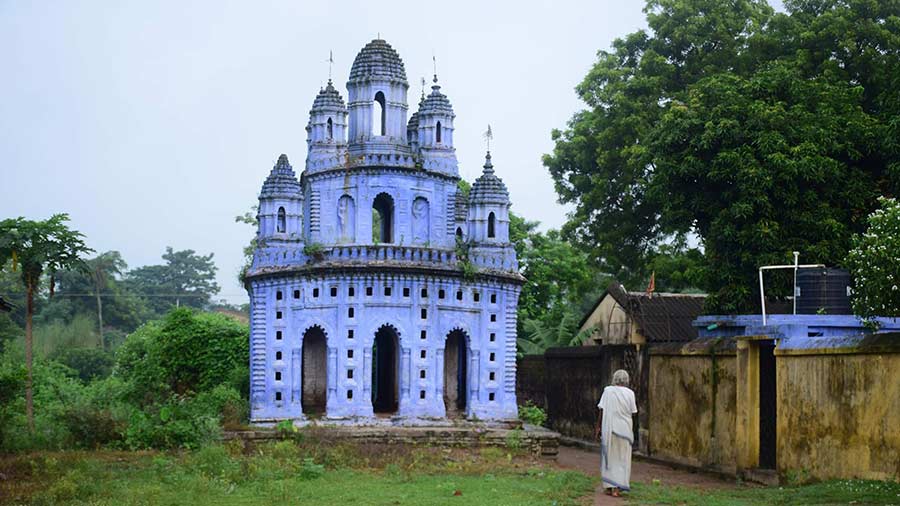Bishnupur can be considered the heritage capital of West Bengal. With old massive temples built in brick, terracotta or laterite stone, the town in Bankura district has some of the best examples of Bengal school of architecture.
However, there is more to Bankura than Bishnupur, especially for those looking to explore Bengal’s built heritage. While the temples of Bishnupur are finer examples, these relatively lesser-known places, all within a 45km-radius of the town, are worth a visit for heritage lovers.
Tejpal
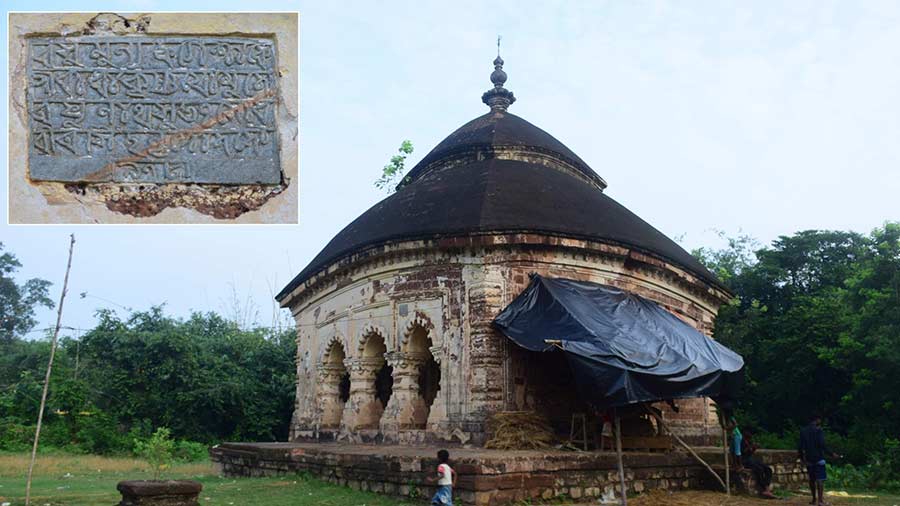
The aatchala stone temple at Tejpal, 2km northwest of Bishnupur
Tejpal is one of the closest sites to Bishnupur. Though officially protected by the Archaeological Survey of India, the temple at Tejpal is in need of attention. Built in laterite stone, the aatchala temple has triple arched entrances and dates back to the 17th century. Some of the original stucco work still exists on the temple walls. There are only a few laterite stone aatchala temples in Bankura and none in Bishnupur town. Unlike in other ASI-protected sites in and around Bishnupur, there is no landscaped garden hemming the premises of the temple, which also serves as a makeshift workshop for artisans during Durga Puja.
Records by Amiya Bandopadhyay, author of Bankura Jelar Purakirti, and English-born academic David McCutchion have identified the structure as a Radha-Krishna temple; the ASI board declares it to be a Gour Nitai temple. The foundation stone indicates that the temple at Tejpal was built by Malla king Bir Singha Dev (or Beera Singha), son of Raghunath Singha Deva, in 1672 and dedicated to Radha-Krishna.
Avantika
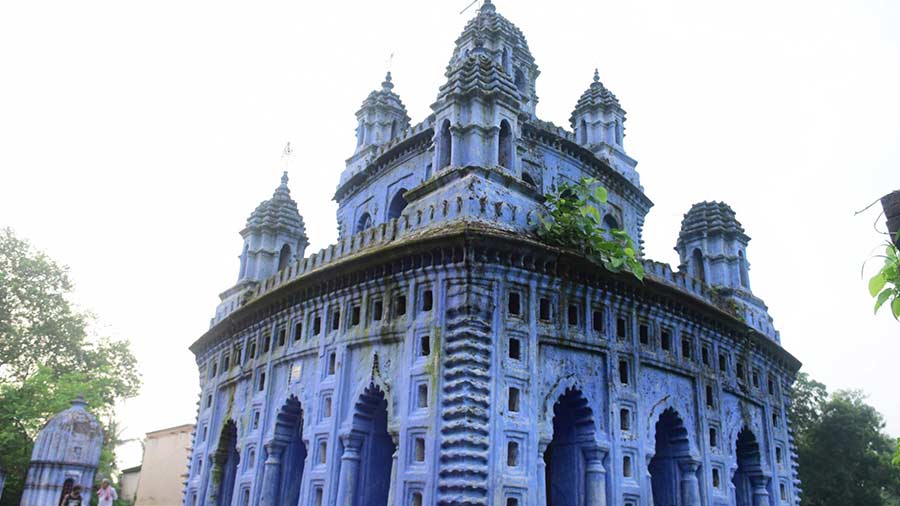
The Rasmancha at Avantika, about 6km north of Bishnupur
The two-storeyed Rasmancha with nine pinnacles and a triple-arched entrance on all four sides is a significant structure of built heritage in Avantika, about six kilometres from Bishnupur. There are several such structures all over Bankura, but what makes this one unique is the presence of latticework on the walls of the lower floor. The top floor has some figurines worthy of note on its walls. The only other such structure with latticework is a Rasmancha at Bhara, but that is a recently built structure.
Dharapat
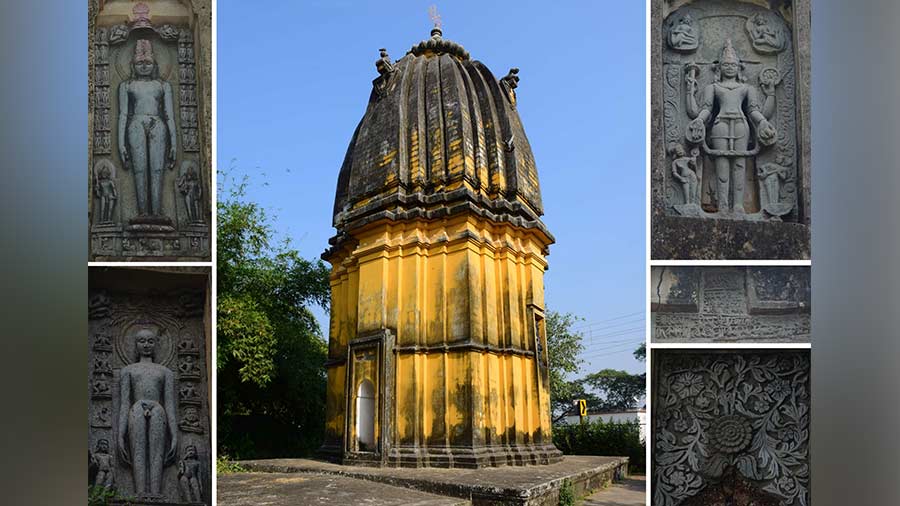
Pancharatha Deul style temple at Dharapat and (inset) the statues, floral motifs and the foundation stone on the wall of the temple, 11km north of Bishnupur
An early 17th-century Pancharatha Deul-style temple built in laterite stone stands at Dharapat. Recently plastered and painted, the structure is protected by the West Bengal Heritage Commission. The foundation stone indicates it was constructed in 1603 during the rule of Malla king Hambir Malla Deva (or Bir Hambir). The most important features of the temple are the three stone statues on the three walls — Jain deity Adinath on the northern side, Jain deity Pareshnath on the western wall, and Vasudev on the eastern wall.
Dihar
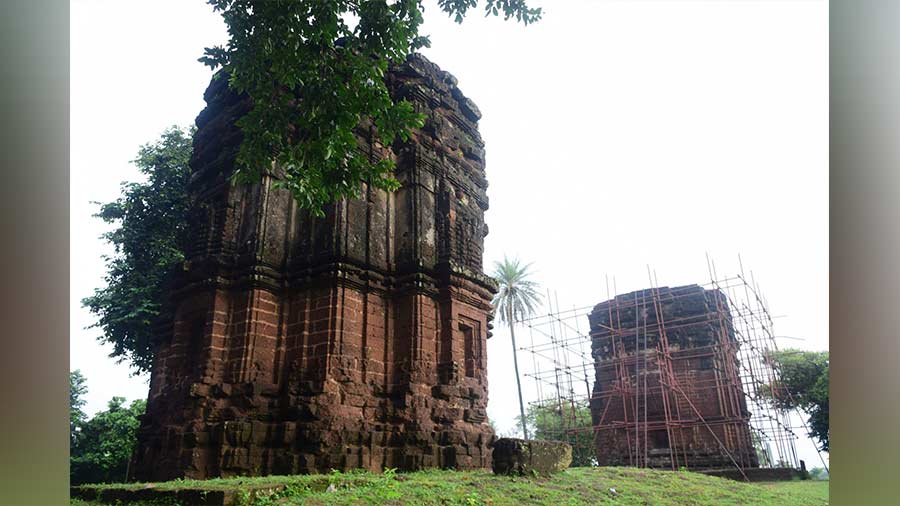
Sareswar and Saileswar temples at Dihar, about 10km north of Bishnupur
Dihar is a small village along the left bank of Dwarakeswar river. Two laterite stone temples called Sareswar and Saileswar are well-known heritage structures in Dihar. The upper levels of both temples have broken down, however the walls of the shrine feature small temple sculptures indicating that these temples could have originally been built as Deul-style temples. According to D.B. Spooner, erstwhile Superintendent of Archaeology, Eastern Circle ASI, the temples were built by King Prithvi Malla 1346.
Balsi
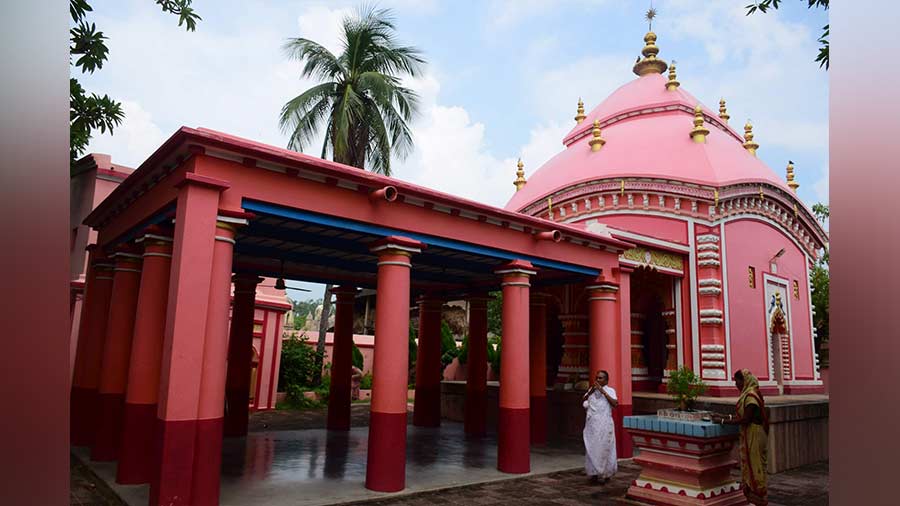
‘Aatchala’ style Laxmi Janardan temple in Balsi, about 28km northeast of Bishnupur
Located on the left bank of Dwarakeswar river, Balsi has several temples as well as a Rasmancha and Dolmancha. The most prominent structure is the stone aatchala temple of Laxmi Janardan in Chowdhury para. The foundation stone indicates that this temple was built in 1652. A Dolmancha and Rasmancha stand nearby.
The other built heritage at Balsi worth mentioning are two brick temples with terracotta motifs, belonging to the local Barat family. The two temples stand side by side — one is an aatchala-style temple while the other is a Deul — and are believed to be over 220 years old. Balsi also has a twin Deul temple, a Durga Dalan and more memorable heritage structures.
Bamira

Bamira is famous for its east facing Navaratna-style Nilamadhab temple, which is now protected by the West Bengal Heritage Commission. The temple features terracotta panels and triple arch entrances. The other important built heritage structures in town include an aatchala temple with terracotta motifs on its facade, a flat-roofed temple, a Rasmancha and a Pancharatna Ram temple that is in ruins.
Patrasayer

Kalanjay Shiva Temple Shiva at Patrasayer, about 33km northwest of Bishnupur
Patrasayer is famous for Kalanjay Shiva temple, which in all probability, was originally a Deul-style temple but now looks like a Ekratna temple surrounded by closed corridors and arches. Close to Kalanjay Shiva is the Ghosal family’s east-facing aatchala Sridhar Temple. Adjacent to it is a temple complex also belonging to the Ghosal family, inside which stand three south-facing temples. The first is Saptaratha Deul temple with a Haraparbati sculpture on its facade; the second is an aatchala Raghubir temple built in stone but with detailed terracotta motif on its facade; and the third is a flat-roofed temple with triple-arched entrance with stucco work on the wall and large figurines behind.
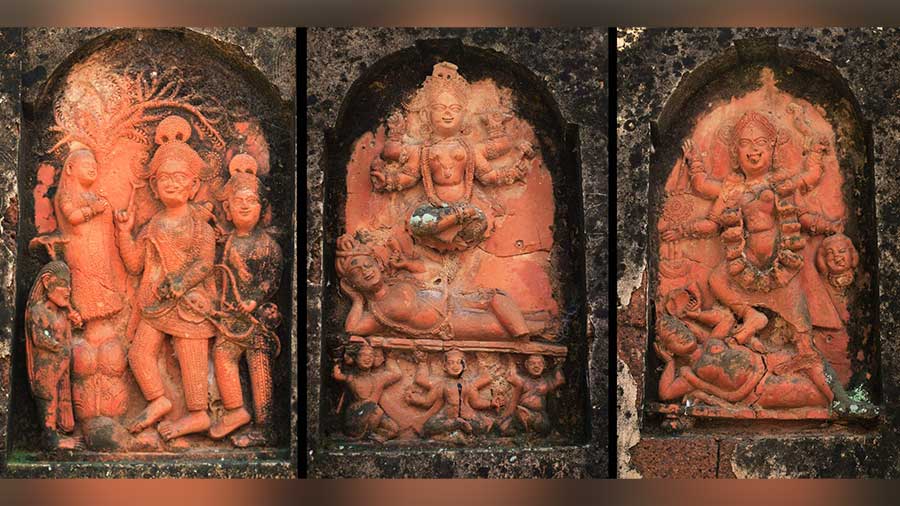
Large figurines on rear wall of a flat-roofed temple in temple complex of Ghosal family at Patrasayer
Travel details:
- Bishnupur is about 5 hours by road from Kolkata and well-connected by train.
- All the towns are located within a 45-km radius of Bishnupur town and can be covered in one day.


